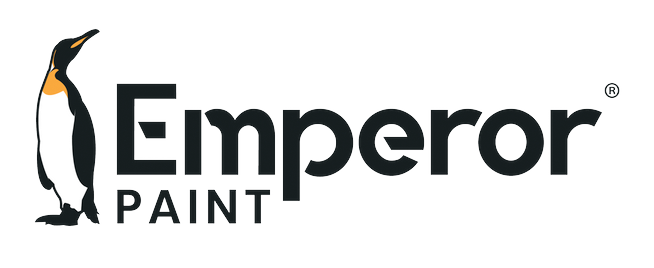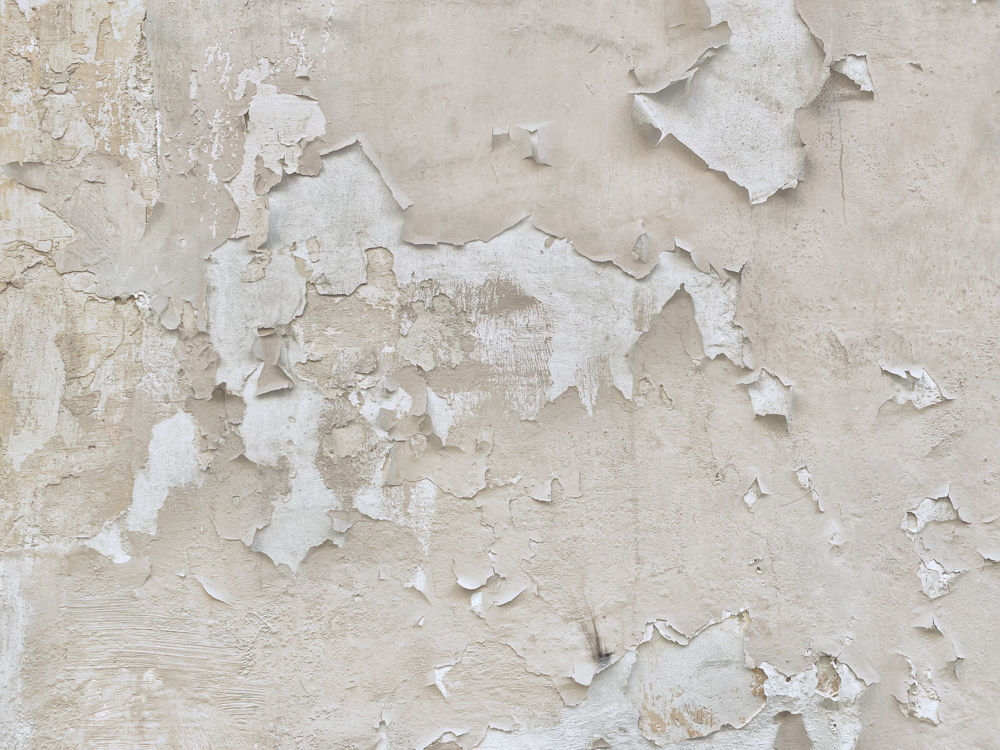
Peeling, bubbling, cracking, crocodiling and crazing are all problems that can cause exterior paint to fail and leave a property looking less than its best. These issues and many more are extremely common in the UK due to a number of factors, which is why in this guide we are going to cover all of these problems including what causes them and how to prevent them moving forward.
Why Does Exterior Paint Fail?
Whether it is applied indoors or outdoors, paint can fail any number of reasons. When it comes to exterior paint specifically, there is the added factor of the elements that can mean that paint failure on exterior surfaces is much more common than interior surfaces. Here are the most common reasons behind exterior paint failure and how to identify them. While exterior paints can refer to paints designed for wood, metal or masonry, in this guide we are going to mainly focus on masonry paint, as this is surface that causes the most problems for homeowners.
MOISTURE
The vast majority of paint failure relating to exterior paints is moisture. This can be an issue not only at the point of application but also further down the line when the paint is subject to weathering.
When applying a water-based masonry paint, which 99% of masonry paints are, the surface must be dry. If you apply paint to a damp surface, the paint will have difficulty adhering to the wall causing it to bubble. This is generally an issue that is quick to surface its head, as the paint will fail within a matter of days or weeks.
Even if you have applied a paint to a dry surface, this does not mean moisture will not be an issue at some point. While all masonry paints are designed for exterior use and thus are resistant to some level of weathering, not all exterior masonry paints are fully waterproof. Many refer to themselves as 'weather resistant' or 'weatherproof', however this does not mean they prevent all water absorption. To be fully waterproof a paint must be 'water repellent' and therefore repel water away from the surface.
If an exterior paint is not water repellent it will simply allow moisture to soak into the surface. This is where 'breathability' comes in, which refers to the ease of which moisture, in the form of water vapour, can naturally breathe out of the painted surface. If a paint has low breathability, any moisture that enters the surface will simply become trapped and unable to escape. This moisture ultimately builds up until it has no where else to go, eventually lifting the paint film away from the surface and causing it to bubble. The majority of exterior paints today are acrylic-based, which have low breathability leading them to fail after 1-3 years.
A combination of high breathability and water repellent properties is what prevents paint from failing. If an exterior paint does not have both of these properties, moisture will simply cause the paint to fail which is why a large amount of peeling, bubbling or cracking paint is simply down to the level of moisture exterior paint must endure in the UK.

LACK OF PREPARATION
Preparation is the single most important part of the application process as any professional decorator will tell you, which is why poor preparation can often lead to paint failing. Poor preparation can come in a range of forms but 9 times out of 10 means that the surface was not properly cleaned before applying the paint. When it comes to masonry surfaces specifically, these can gather large amounts of dirt and organic growth which if left on the surface can cause bubbling paint.
Cleaning masonry comes in two parts; removing dirt and debris and applying a fungicidal cleaner. Firstly, the masonry must be free of any dirt or debris as this will create a barrier between the exterior wall and the paint meaning they do not bond successfully, leading to paint peeling. Cleaning the surface down with a stiff brush and water removes this dirt and ensures the wall is clean and sound. After this applying a fungicidal cleaner to masonry is essential as this kills any fungal growth, ensuring that once the paint is applied the fungus cannot continue to bloom.
This process of cleaning can often be one that homeowners miss when applying a paint, however it is a crucially important step in creating a long-lasting finish when exterior decorating.
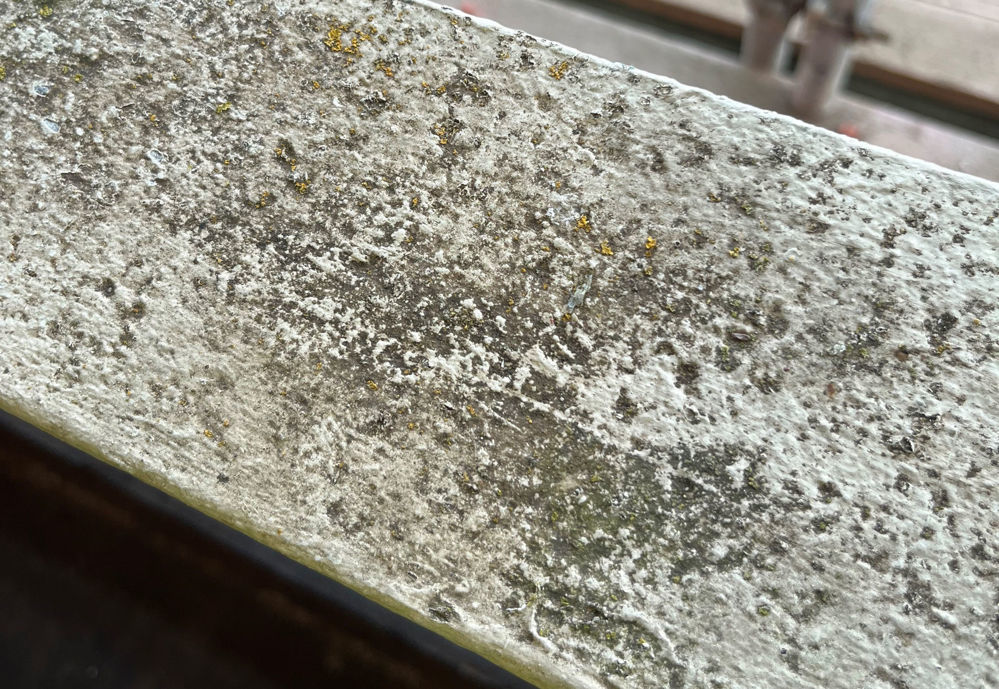
PRIMING
Paint more often than not requires a primer to be applied to any bare, unpainted surface before you can apply the paint. A primer acts in two ways, firstly aiding the adhesion of the paint and secondly preventing the paint from soaking into the surface, which is especially the case with exterior stone, brick, render and wood. If a surface has already been painted and that paint is sound and not flaking away, you do not need to apply a primer unless in certain circumstances such as lime render coated in limewash, which sometimes needs to be primed before painting.
Many people confuse a primer with a stabliser. The difference is a primer acts as both a primer and a stabiliser, while a stabiliser does not act as a primer. Certain masonry surfaces are soft and have a tendency to breakdown and become chalky over-time due to surface weathering. A stabilising solution is designed to bind these chalky masonry surfaces in order to create a solid base for the paint to adhere to. It is not necessary to apply a stabiliser and a primer as a primer will help bind the surface as well as create a base for the paint.
Not applying a primer or stabiliser to a surface that is showing signs of breakdown can lead to paint failure in some cases as the paint does not have a sound, solid base to adhere to.
EFFLORESCENCE
Efflorescence or salt efflorescence refers to a white, powdery deposit that can sometimes be found on the surface of masonry. It forms white stains on both natural brickwork and painted masonry, caused by water ingress which dissolves the salts within the masonry. When this moisture evaporates out of the wall, the salt is taken with it and eventually deposited on the surface of the wall. This is often seen on bare, untreated masonry but can also cause painted masonry to peel and blister as the salts try to escape the surface. If efflorescence is present, this is a sign that the exterior wall is being subject to high levels of moisture.
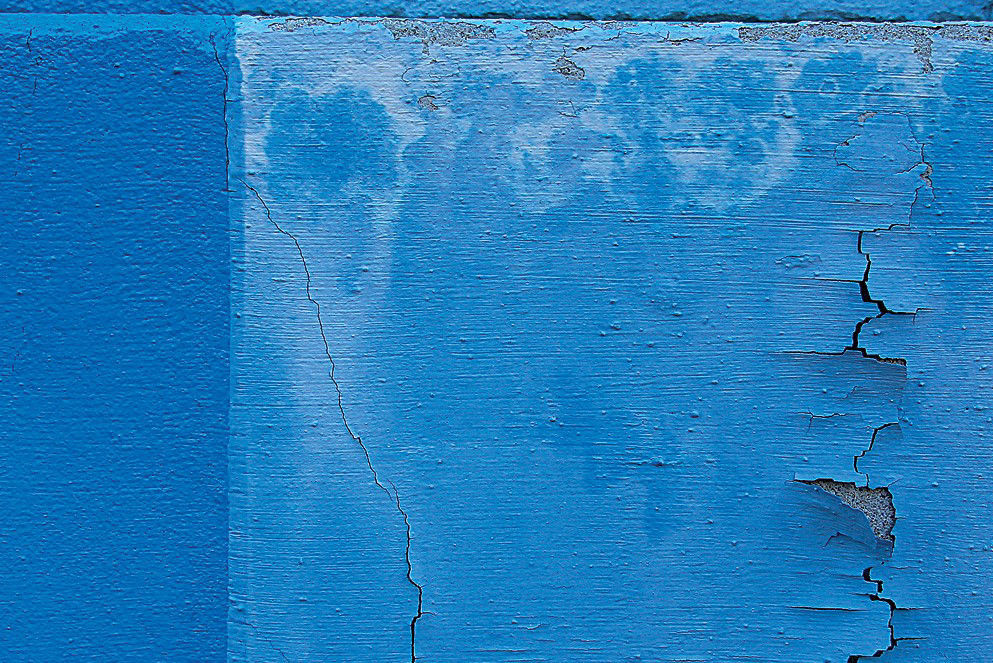
APPLICATION ERROR
In some rare cases, application error can also cause paint to fail, although this is generally rare. If a paint is applied too thickly, 'crazing' or 'crocodiling' can occur where the surface level paint begins to crack as the paint beneath the surface tries to dry. The result is a poor finish which generally will not fail completely but will need sanding back to a smooth finish and re-coated with another coat of paint to fully remedy.
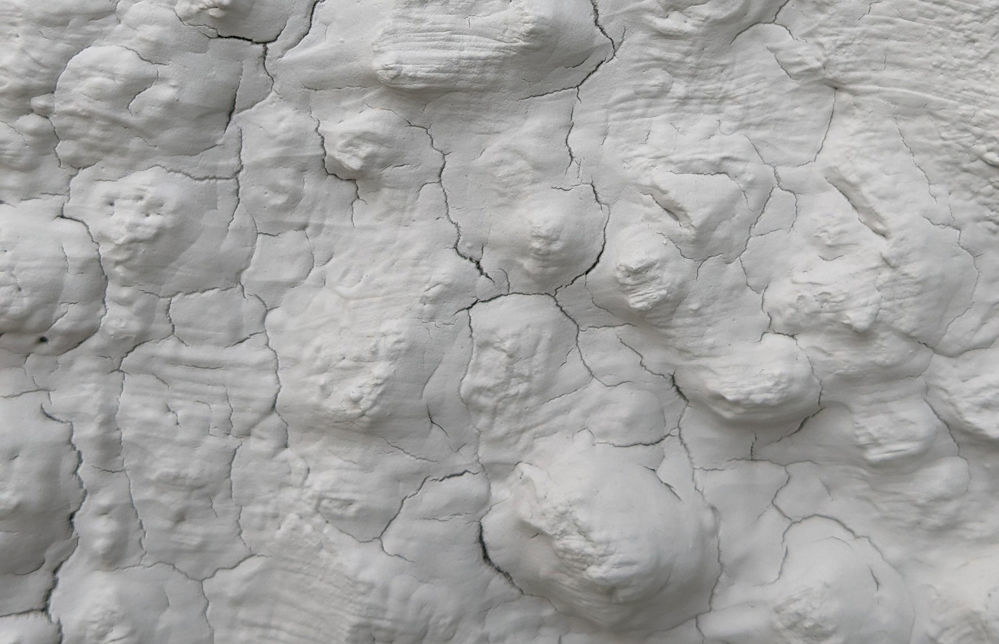
How To Prevent Paint Failure
The truth is, the vast majority of paint failure is caused by moisture. While application error can cause problems, if you follow the manufacturers instructions you will not have any problems.
As paint generally fails due to moisture either at the point of application or after application, there are a number of measures you can take to prevent it. The first thing to ensure is that you are applying paint in the correct conditions. Firstly, make sure you give yourself enough time to complete the project before the heavens open. If you are painting exterior walls, the chances are you are using a water-based paint which will be touch dry in 1-2 hours and have a recoat time of 5-6 hours. You want to have enough time to apply two coats of paint before any rainfall, meaning it is ideal to leave yourself two days to apply the paint. This surface must also be dry before you can paint it. If the surface is saturated, the moisture can prevent the paint from adhering to the surface. This can be a problem with solid wall properties as these have a tendency to hold high levels of moisture. A moisture reader can be used to measure the level of moisture within a surface. As a guide, moisture content of higher than 20% is likely to lead to paint failure.
Applying a masonry paint correctly and in the right conditions does not mean paint failure cannot occur down the line. The weather in the UK has a large amount of rainfall which is the single biggest problems for exterior paint. As we have discussed, most exterior paints are acrylic-based meaning they are not fully waterproof and have low breathability. The cause of this is that moisture will asborb into masonry walls and other building materials and become trapped, causing paint to peel and blister.
SUPER HYDROPHOBIC TECHNOLOGY
This is why Emperor Masonry Paint was developed, which is designed for use on any exterior wall including brick, stone & render. It uses highly advanced nano-technology which lines the pores of masonry without sealing them. This means that it creates a super hydropobic (ultra water repellent) surface on the wall while remaining highly breathable. While water simply forms 'beads' on the wall and rolls off, water vapour that naturally builds up within a property can freely escape, keeping the exterior wall dry.
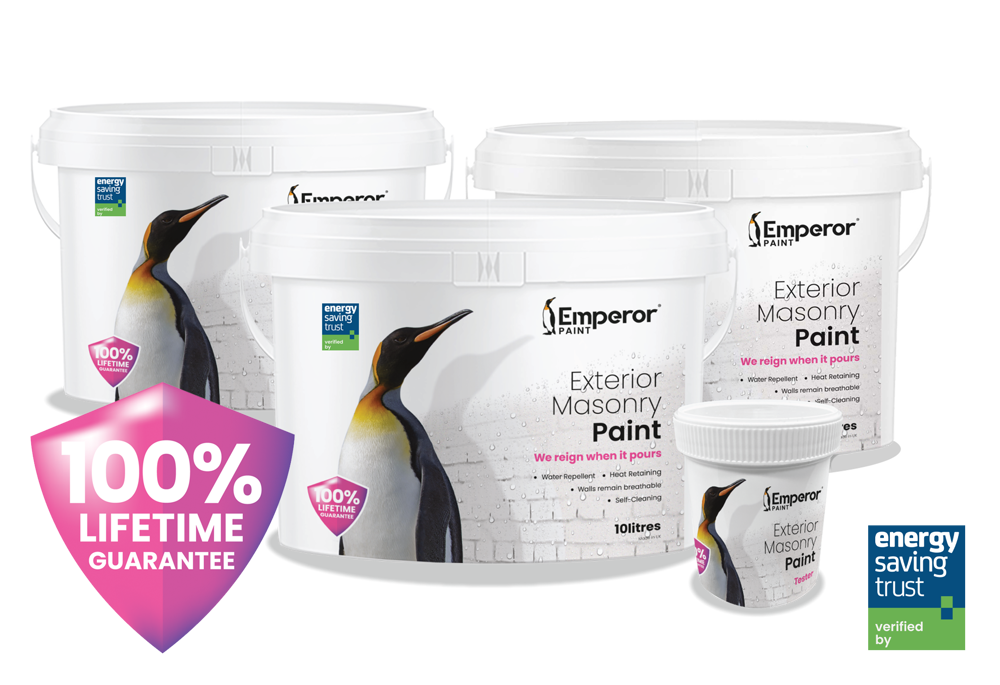
This has a number of benefits both for the appearance and performance. Firstly, by eliminating moisture, Emperor Masorny Paint will never peel or flake if applied correctly. This is also down to the way the paint chemically bonds to the wall, creating an extremely durable finish. In independent testing, Emperor Masonry Paint when subjected to 25 years of harsh weathering was found to have no change in performance of appearance, meaning it will likely far exceed this 25 year lifespan. For this reason, Emperor Masonry Paint comes with a lifetime guarantee.
Like rainfall, dirt cannot attach to the wall making a self-cleaning surface. Without any moisture in the wall, green growth such as moss, algae and lichens cannot develop on the wall either, ensuring it stays pristine and maintenance free.
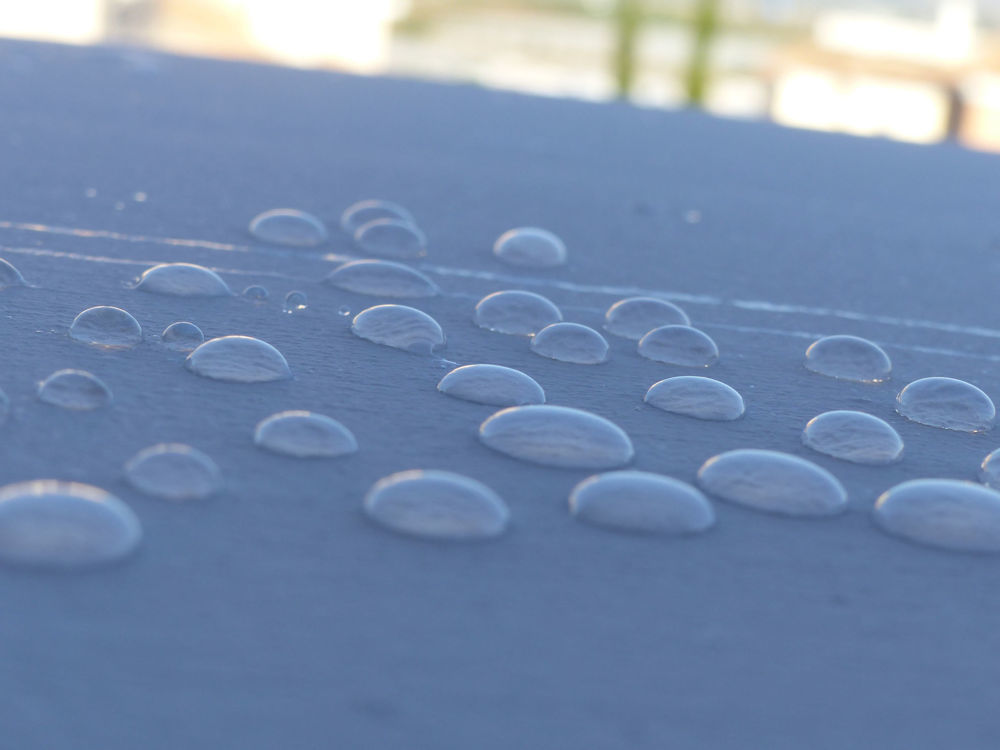
Aside from the added benefits to the appearance of the wall, the advanced technology is also highly beneficial for the performance of the wall. By preventing water ingress, penetrating damp is significantly reduced as moisture will not build up within the wall. Furthermore, the masonry or render is protected from any damage due to freeze-thaw cycles, helping to prevent cracking within the wall.
Most importantly however, the thermal performance of the wall can be significantly improved. 35% of heat in our homes is lost through the exterior walls. This, coupled with the fact that damp content of 5% can lower the insulating properties of a material by 50% means that by keeping exterior walls dry, you also keep them warm. Independent testing found that Emperor Masonry Paint kept a brick wall 6°C warmer on average when compared to an untreated wall. This evidence led to Emperor Masonry Paint being verified by the Energy Saving Trust for its ability to contribute to the energy efficency of a property.
Frequently Asked Questions
Q. CAN I APPLY EMPEROR MASONRY PAINT OVER THE TOP OF PREVIOUSLY PAINTED WALLS?
Yes, Emperor Masonry Paint can be applied both to unpainted and previously painted masonry walls. If the surface is not painted simply apply one coat of Emperor Exterior Primer first to aid adhesion and prevent the paint from soaking into the wall. You can then simply apply two coats of Emperor Masonry Paint as normal.
If you are painting a previous painted wall ensure this paint is sound before painting. If there are any areas of loose or defective paint then this must be removed by using a wire brush or a paint scraper. You are looking to remove the paint until you get a firm edge where no more paint can be removed. You can then simply apply one coat of primer to these bare areas where you have removed paint, followed by applying two coats of the paint to the full surface.
If no paint is failing on the wall, you can simply apply the paint straight to this surface, once it has been cleaned.
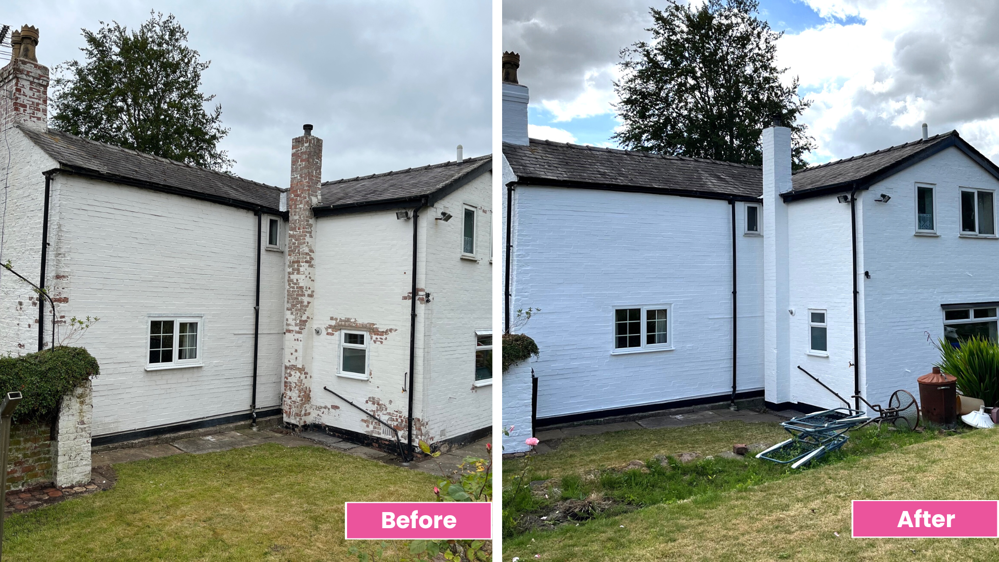
Q. MY EXTERIOR PAINT IS BEGINNING TO PEEL, WHAT SHOULD I DO?
If this paint is showing any signs of moisture, the best way to prevent further peeling is to apply a water repellent paint over the top. This will protect the paint that is allowing the moisture to enter and ensure you do not have to remove larger amounts of paint later on.
Q. WHAT SHOULD I DO IF I WANT TO REMOVE PAINT COMPLETELY FROM A WALL?
Sometimes when a wall has a tired, weathered exterior wall that has been suffering from peeling paint for a while, it can be tempting to remove all of the paint and leave an unpainted, natural look on the brickwork. This can be successful at revamping the walls, especially with some repointing to refresh the look.
If you are looking for a natural brickwork look, we would recommend applying Emperor Masonry Creme. This is a super hydrophobic, highly breathable treatment for bare exterior walls that creates an invisible protective barrier. Unlike brick sealers which seal masonry due to their low breathability, Emperor Masonry Creme remains highly breathable, ensuring brickwork can naturally breathe and stay dry while not impacting the appearance of the bricks in any way.

We hope we have answered any questions you may have had regarding peeling and bubbling paint and how to prevent it long-term. If you have any other questions, feel free to get in touch with our team of experts who are on hand to assist you. Contact them today by emailing info@emperorpaint.co.uk or calling 0161 509 9009. Alternatively, shop our range of ultimate performance exterior products today and get FREE delivery on all orders.

